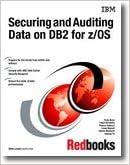Question
Question 2 Ayr Co. manufactures residential and commercial security alarms. The company has designed a new residential alarm that can connect to home Wi-Fi systems.
Question 2
Ayr Co. manufactures residential and commercial security alarms. The company has designed a new residential alarm that can connect to home Wi-Fi systems. This feature reduces the cost of installation and avoids the need for conventional telephone access to the system. Because it is advanced and innovative, the system has no direct competitors and, therefore, Ayr plans to use a cost-based price for this new product. The company policy is to mark up total manufacturing cost by 30% to set the product price.
Ayr is organized into three departments: stores, production, and assembly. The fixed cost structure in each department is as follows:
|
Department |
Cost driver | Fixed manufacturing overhead | Practical capacity | Average activity level | Planned activity level |
| Stores | Materials cost | $ 200,000 | $ 1,200,000 | $ 900,000 | $ 1,000,000 |
| Production | Machine hours | 1,200,000 | 10,000 | 7,000 | 8,000 |
| Assembly | Labour hours | 450,000 | 8,000 | 5,000 | 7,000 |
The variable costs in each department for this new product have been estimated as:
Stores:
Materials $35
Direct labour 0.15 hours @ $18 per hour
Variable overhead materials cost 20%
Production:
Materials $2.50
Direct labour 0.2 hours @ $22 per hour
Machine hours 0.15
Variable overhead machine hours $15
Assembly:
Materials $0.75
Direct labour 0.9 hours @ $28
Variable overhead labour hours $2 per hour
Ayrs current approach is to compute manufacturing costs for a product as all variable costs of that product plus an allocation of total plant fixed manufacturing overhead. The plantwide overhead rate is based on total direct labour hours. The current total amount worked in all departments is 20,000 hours.
Required:
Compute the suggested selling price for the new security alarm product based on the current policy for allocating fixed overhead.
Recalculate Ayrs suggested selling price under each of the following alternative assumptions:
The fixed manufacturing overhead rate is calculated using departmental practical capacity.
The fixed manufacturing overhead rate is calculated using the average departmental activity level.
The fixed manufacturing overhead rate is calculated using the planned departmental activity rate.
Which approach do you recommend, and why?
Step by Step Solution
There are 3 Steps involved in it
Step: 1

Get Instant Access to Expert-Tailored Solutions
See step-by-step solutions with expert insights and AI powered tools for academic success
Step: 2

Step: 3

Ace Your Homework with AI
Get the answers you need in no time with our AI-driven, step-by-step assistance
Get Started


